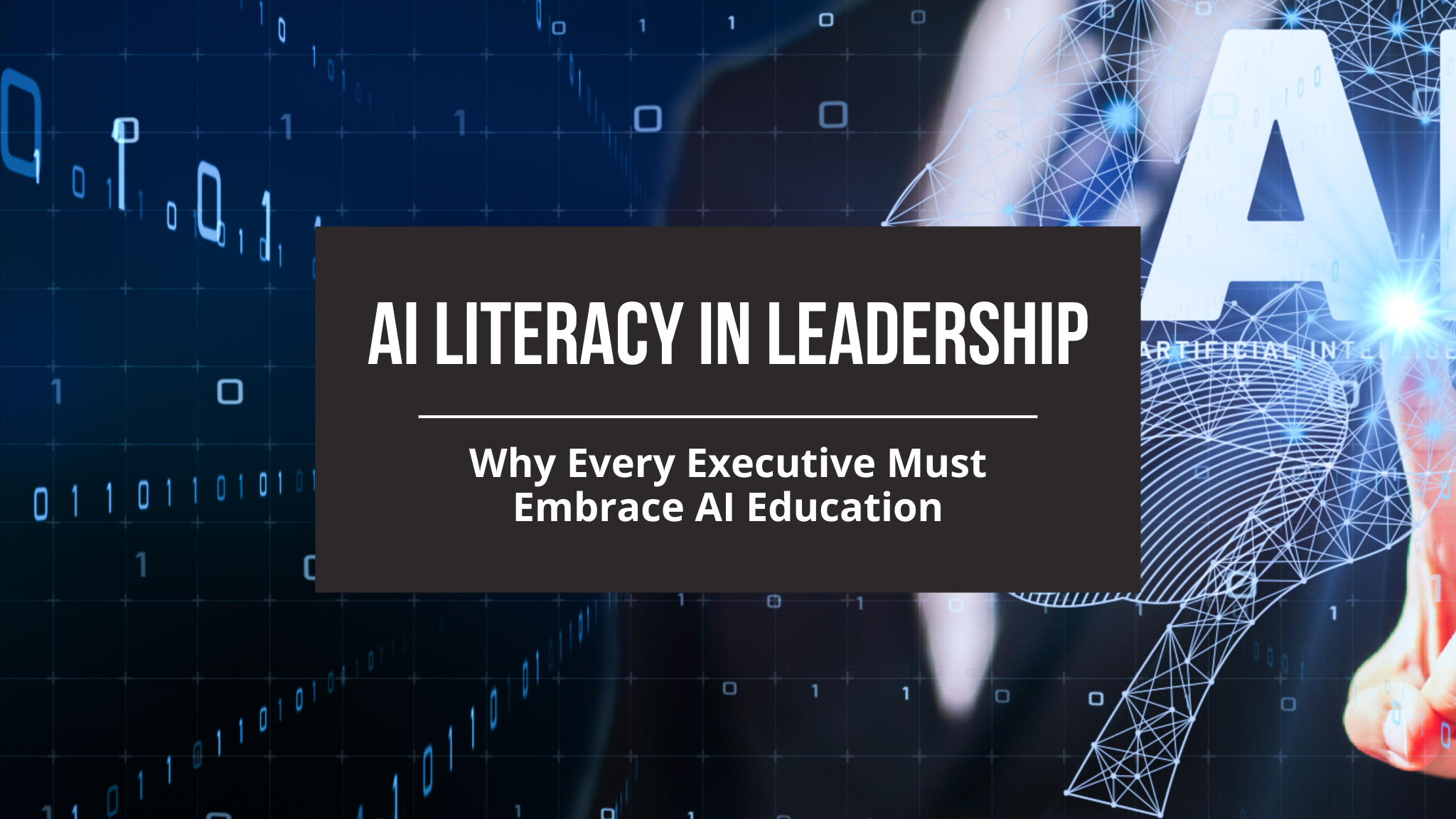AI Literacy in Leadership: Why Every Executive Must Embrace AI Education

Artificial intelligence (AI) is reshaping industries at an unprecedented pace, and the ability to navigate this transformation is becoming a core competency for leaders. Major corporations are recognizing this shift, prioritizing AI literacy across their executive teams and workforce. For example:
- Johnson & Johnson has mandated AI training for over 56,000 employees, ensuring company-wide AI adoption.
- Merck developed GPTeal, an internal AI platform designed to enhance productivity and streamline operations.
- Eli Lilly requires senior leaders to obtain AI certification, demonstrating a commitment to merging AI fluency with traditional leadership skills.
These initiatives reflect a broader industry trend: AI literacy is no longer optional — it is essential for leadership success.
What Is AI Literacy and Why Does It Matter?
AI literacy refers to the ability to understand, evaluate, and implement AI tools effectively within a business context. This does not mean every leader must become a data scientist, but it does require:
- Basic AI knowledge — Understanding machine learning, natural language processing, and automation.
- Strategic AI thinking — Identifying where AI can optimize operations, reduce costs, and drive innovation.
- Ethical AI considerations — Ensuring AI is used responsibly, avoiding bias, and maintaining transparency.
- Human-AI collaboration — Balancing automation with human expertise to create a more efficient and empowered workforce.
Executives who lack AI literacy risk falling behind as competitors leverage AI-driven insights to optimize decision-making, enhance customer experiences, and streamline processes.
How AI is Reshaping Leadership
1. Enhanced Decision-Making
AI enables leaders to make data-driven decisions faster and more accurately. Predictive analytics, AI-powered dashboards, and automation tools allow executives to identify market trends, assess risks, and optimize business strategies.
2. Operational Efficiency & Cost Reduction
AI-driven automation reduces manual workloads, enhances productivity, and minimizes errors. Leaders who understand AI can better implement process automation, improving operational efficiency and cost savings.
3. AI-Driven Innovation
AI fuels innovation by uncovering new business opportunities. From AI-generated content to personalized customer experiences, forward-thinking leaders are leveraging AI to create competitive advantages.
4. Talent Development & Workforce Transformation
AI will not replace leadership, but leaders who fail to adopt AI will be replaced. Upskilling employees, fostering AI fluency, and integrating AI into leadership development programs ensure organizations stay ahead of the curve.
How Leaders Can Develop AI Literacy
To bridge the AI knowledge gap, leaders should:
- Invest in AI Training — Leverage AI education programs, such as certifications from MIT, Stanford, and online platforms like Coursera or Udacity.
- Encourage AI Upskilling — Foster a culture of continuous learning where employees and leadership teams engage with AI tools and methodologies.
- Experiment with AI Tools — Use AI-driven software like ChatGPT, Jasper, or IBM Watson to experience AI’s capabilities firsthand.
- Stay Informed — Follow AI industry news, research developments, and emerging trends.
- Collaborate with AI Experts — Partner with data scientists, AI strategists, and industry leaders to integrate AI into business operations effectively.
The Future of Leadership is AI-Enhanced
AI literacy is no longer a “nice-to-have” but a fundamental leadership skill. Organizations that invest in AI education for their leaders will gain a significant competitive edge, ensuring adaptability and innovation in an AI-driven world.
Follow me for more insights on AI, leadership, and innovation. Share your thoughts — how is your organization embracing AI education?